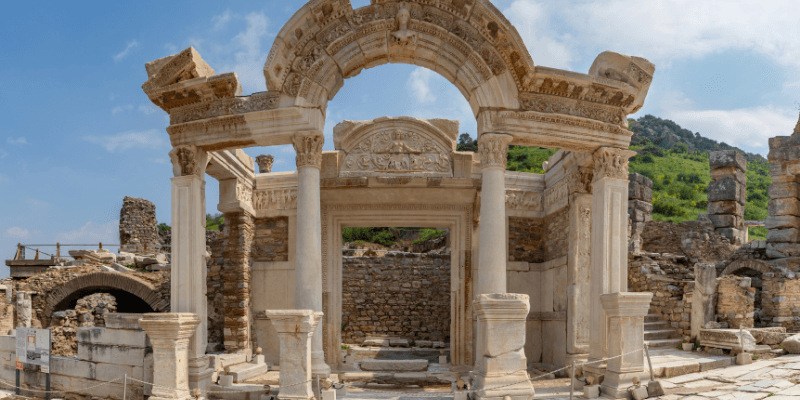
The Temple of Hadrian is an ancient Roman temple located in the ancient city of Ephesus, near present-day Selçuk in Turkey. Here's a simplified overview:
Key Features:
Dedication: The Temple of Hadrian was built in honor of the Roman Emperor Hadrian, who visited Ephesus in the 2nd century AD. It served as a tribute to his reign and influence.
Architectural Style: The temple is an excellent example of Roman architecture, featuring a facade adorned with Corinthian columns, intricate reliefs, and decorative elements.
Relief Panels: The facade of the temple is embellished with relief panels depicting mythological scenes and figures, including Medusa, Tyche (the goddess of fortune), and Nike (the goddess of victory).
Cultural Significance: The temple played a significant role in the religious and cultural life of Ephesus, serving as a center of worship and a symbol of Roman authority and influence in the city.
Historical Preservation: Although the temple has suffered damage over the centuries, including earthquakes and looting, several sections of the facade and columns have been reconstructed or restored, allowing visitors to appreciate its architectural beauty.
Visiting Tips:
Archaeological Site: The Temple of Hadrian is part of the larger archaeological site of Ephesus, which is open to visitors. Explore the ruins of the temple and learn about its history through informational signs or guided tours.
Photography: Bring a camera to capture the intricate details of the temple's facade and relief panels, which offer insight into the artistry and craftsmanship of the Roman period.
Historical Context: Consider learning about the history and significance of the temple before visiting, as it enhances the understanding and appreciation of its cultural and architectural importance.
The Temple of Hadrian stands as a testament to the enduring legacy of Roman civilization and its impact on the ancient city of Ephesus. Visiting this historic site allows travelers to immerse themselves in the rich history and cultural heritage of the region.




